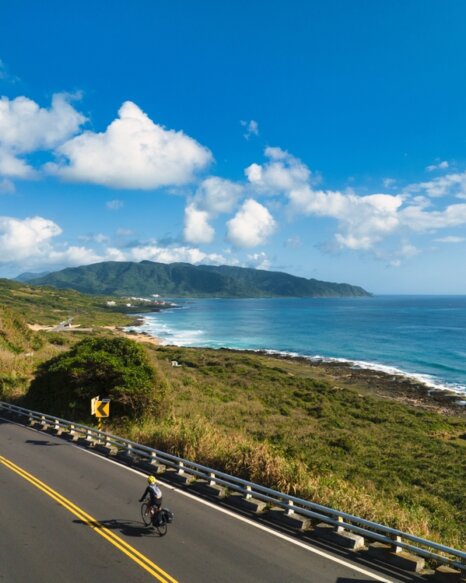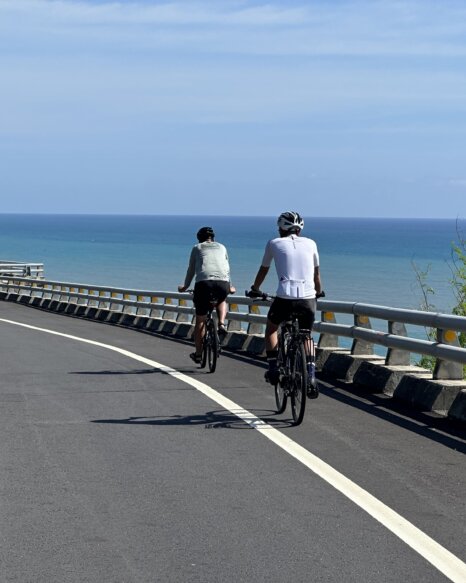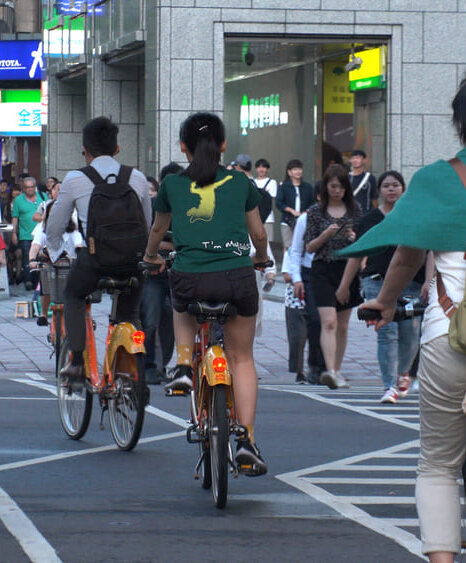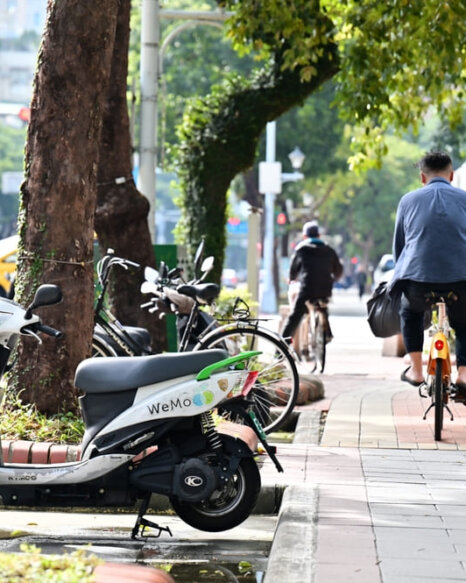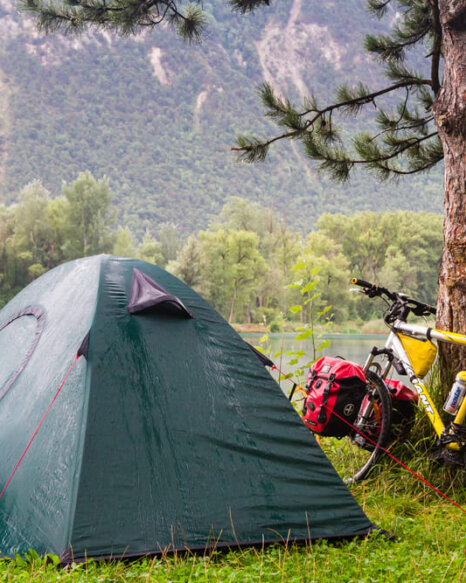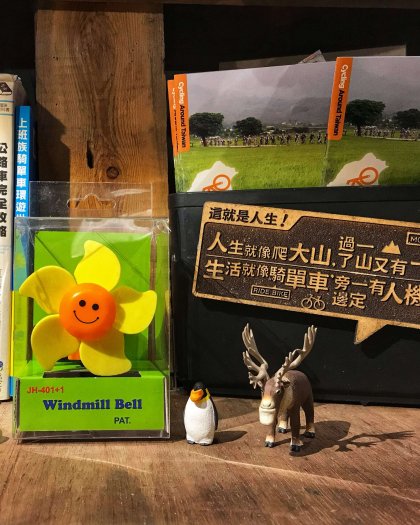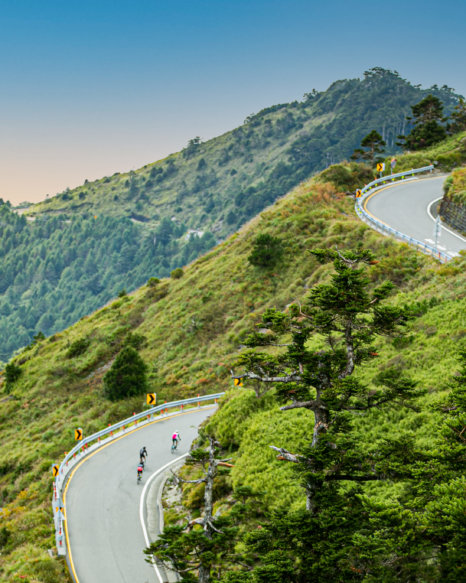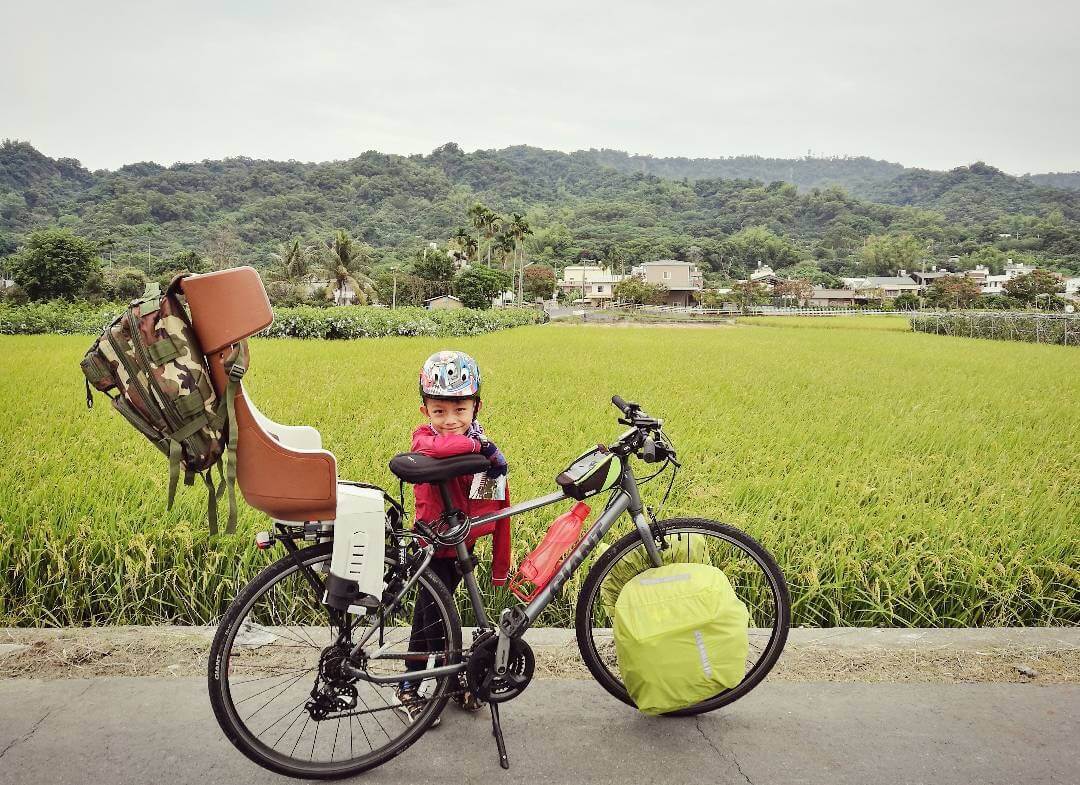
Taiwan, with its diverse landscapes and excellent cycling infrastructure, is perfect for a family bike adventure. Whether you prefer scenic coastal rides or mountain challenges, there’s something for everyone. In this guide, we’ll share essential family travel tips, from choosing the best routes and gear to ensuring safety. Let’s embark on an unforgettable cycling journey in Taiwan!
Guide to Cycling Taiwan for Family Travel Tips
Family Travel Tips: Pre-Trip Checklist for a Fun and Safe Bike Tour in Taiwan
The Key to a Successful Family Travel Tips: Planning Ahead
Planning Your Route and Schedule for a Memorable Family Bike Trip
Family Travel Tips: Why Planning is Essential for a Smooth Bike Trip Around Taiwan
A family cycling trip around Taiwan is an opportunity filled with adventure and learning. Creating a detailed itinerary and route plan is key to a successful journey. Here are some steps to help you plan your trip:
Unveiling the Best Stops for Your Family Cycling Adventure:
- Family Travel Tips: Research Your Destination and Attractions
Before planning your trip, research the main attractions and unique activities at each destination. You can refer to travel guides, blogs, or travel websites for inspiration. - For example, northern Taiwan is rich in cultural and historical sites, central Taiwan is renowned for its natural beauty, and southern Taiwan is famous for its tropical beaches and marine activities.
- Family Travel Tips: Research Your Destination and Attractions
Create a Balanced Daily Schedule for Your Family Bike Tour:
- Avoid overpacking your daily itinerary. Leave plenty of time for children to rest and engage in free play.
- It’s recommended to schedule 2-3 main attractions per day, and be sure to factor in meal times and breaks.
Be Flexible with Your Itinerary:
- Be prepared to adjust your itinerary due to unforeseen circumstances such as weather or traffic conditions. Always have a backup plan in place.
- For example, on rainy days, opt for indoor activities like visiting museums or exhibition halls.
Consider Your Children’s Interests and Needs
Family Travel Tips: Understanding and considering your children’s interests and needs when planning a family travel can make the experience more enjoyable and fulfilling:
Select Activities That Your Children Will Enjoy:
- Choose activities based on your children’s ages and interests. For example, children interested in animals might enjoy visiting a zoo or aquarium, while those fascinated by technology might prefer a science museum.
- Ensure that the activities are safe and age-appropriate for your children, and provide adequate supervision and guidance as needed.
Create Opportunities for Hands-On Learning During Your Family Bike Tour:
- Incorporate interactive and educational activities into your trip to allow your children to learn while having fun. For instance, you could join a nature tour or participate in a local craft workshop.
- This not only enhances parent-child interaction but also enriches children’s knowledge and experiences.
Plan for Your Children’s Everyday Needs on Your Family Travel Tips:
- Make sure to pack essentials for your children, such as snacks, drinks, a change of clothes, and entertainment items to keep them occupied during the journey.
- Schedule ample rest stops to keep your children energized and prevent them from becoming overly tired.
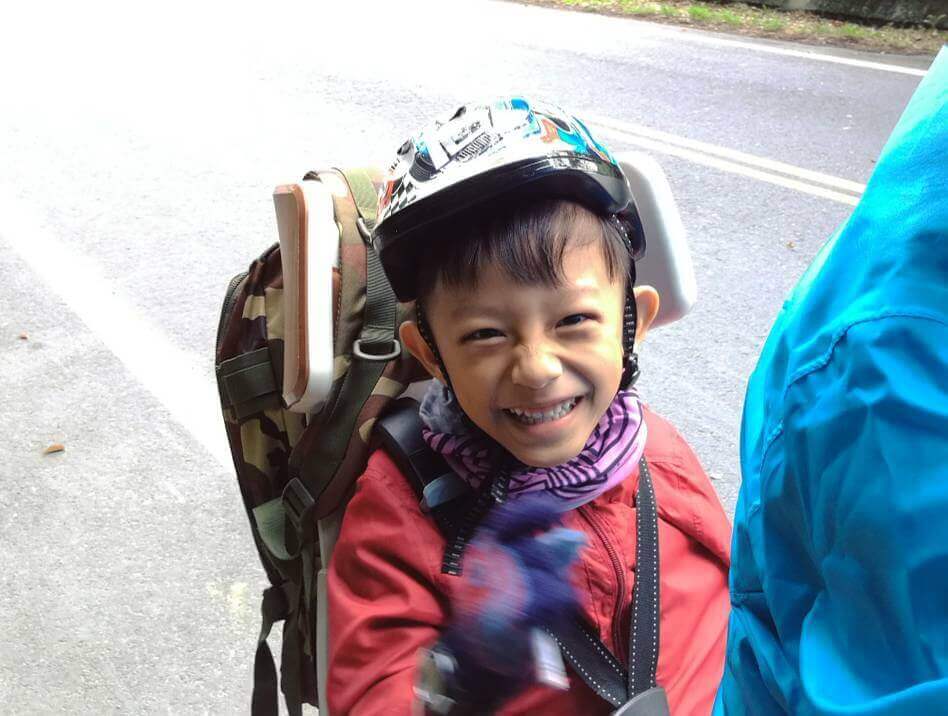
Gear Up for Success: Your Family Travel Tips Checklist
Packing the right items for your family bike tour in Taiwan can significantly enhance your comfort and safety. Here’s a list of essential gear to consider:
Clothing and Daily Essentials
Clothing suitable for the climate:
- Clothing: Pack appropriate clothing based on the local climate. This should include lightweight, breathable clothes for summer and windproof, warm jackets for cooler temperatures.
- Footwear: Opt for comfortable and durable shoes, such as sneakers or hiking boots, suitable for outdoor activities.
Basic toiletries:
- Toiletries: Toothbrush, toothpaste, shampoo, shower gel, and towels.
- Sun and insect protection: Sunscreen, hats, and insect repellent to protect your children’s skin.
Other Daily Essentials:
- Water bottles and lunch boxes: Stay hydrated and pack healthy snacks for the journey.
- Compact rain gear: Pack a portable umbrella or raincoat to prepare for unexpected showers.
Safety Equipment
Safety Seats and Helmets for Kids:
- Child safety seats: When traveling by car, ensure your child’s safety seat is properly installed for added protection.
- Helmets: If you plan on cycling or participating in other outdoor activities, ensure your children wear properly fitted helmets.
First-aid kit:
- Basic medical supplies: Band-aids, antiseptic wipes, pain relievers, and antihistamines for allergies.
- First-aid manual: A basic first-aid manual to guide you through treating minor injuries and other common emergencies.
Entertainment Items
Pack Some Page-Turners for Your Family Travel Tips:
- Choose your child’s favorite storybooks or educational books to provide reading fun and learning opportunities during the journey.
Toys and game equipment:
- Small toys: such as building blocks, puzzles, or small car models, which are easy to carry and can entertain children during the journey.
- Portable game devices: such as handheld game consoles or tablets (with headphones), to provide access to video games or movies.
Travel games and puzzles:
- Design some simple travel games, such as “I Spy” (looking for objects around you) or riddles, to encourage parent-child interaction.

Travel health preparations
Health checks and healthcare
- Get a basic health check for your child before departure to ensure they are fit for travel:
- Health check-up: Take your child for a health check-up, especially before a long trip, to ensure they are in good physical condition. If they have any chronic illnesses or special health needs, obtain travel advice from their doctor.
- Vaccinations: Ensure your child’s vaccinations are up-to-date, especially for diseases prevalent in your travel destination.
- Pack essential medications and familiarize yourself with local medical resources:
- Bring a first-aid kit: Include items like band-aids, antiseptic wipes, and a thermometer.
- Local medical resources: Research and locate hospitals or clinics near your destination in advance, and keep a record of emergency contact numbers. Carry your health insurance card and medical information with you at all times.
Family Travel Tips: Eating Well on the Ride
Research the local food culture in advance and prepare healthy meals or snacks that your kids enjoy. This helps avoid mealtime struggles and ensures they stay happy and nourished on the road.
- Food Culture Research:
Learn about the local cuisine and food customs before your trip. Talking with your kids ahead of time can spark their curiosity and help them feel more open to trying new foods along the journey.
Family travel tips: Make it fun by showing pictures or watching videos together about the destination’s food! - Meal Planning:
If your child has food allergies or is a picky eater, prepare alternatives in advance or consider bringing some of their favorite meals with you. Having familiar options on hand can reduce stress and ensure your child eats well during the trip.
Family travel tips: Pack allergy-friendly snacks and double-check restaurant menus or convenience store offerings ahead of time.
- Food Culture Research:
Stay Energized with Healthy Snacks:
Keep your kids energized throughout the ride by packing healthy snacks and drinks. Think fresh fruit, trail mix, rice balls, or low-sugar juice boxes—easy options that are both tasty and nutritious.- Healthy Snacks:
Pack your child’s favorite healthy snacks—like nuts, dried fruit, whole-grain crackers, or small cartons of milk—so they can easily refuel anytime during the trip. - Drink Choices:
Make sure your kids stay well-hydrated throughout the ride. Encourage them to drink plenty of water or natural fruit juice, and try to avoid sugary drinks.
Family travel tips: A refillable water bottle is a must—easy to carry, eco-friendly, and a great way to track hydration.
- Healthy Snacks:

Research Local Safety Information:
Before your trip, take time to learn about the safety conditions of your destination. This includes checking bike paths, traffic rules, weather conditions, and any travel advisories.
Family travel tips: Knowing what to expect helps you plan better and keeps the whole family safer.
Check Weather and Traffic Conditions:
Stay updated on local weather forecasts and traffic situations. Avoid cycling during extreme weather or rush hours to keep the journey safe and enjoyable for everyone.
Family travel tips: Plan flexible ride times and have a backup indoor activity in case of bad weather.- Weather Forecasts:
Check the weather forecast regularly before and during your trip to stay prepared for any changes. Bring rain gear or warm clothing if needed, so you can adjust easily to unexpected weather.
Family travel tips: A sudden downpour or temperature drop can turn into an adventure—as long as you’re ready for it! - Traffic Awareness:
Familiarize yourself with local traffic rules and common road conditions at your destination. Avoid peak traffic hours and choose safe, family-friendly transportation options whenever possible.
Family travel tips: Look for bike paths, car-free zones, or quiet roads that make riding with kids safer and more enjoyable.
- Weather Forecasts:
Emergency Contacts:
- Police Station:
Carry a list of local emergency numbers with you at all times, including the police, nearest hospitals, and your country’s embassy or consulate. Having this information ready can save valuable time in an emergency.
- Police Station:
Family Travel Prep
Emergency Planning:
Create a simple emergency plan and make sure your kids know what to do if they get lost or separated during the trip. Choose a meeting point, teach them how to ask for help, and ensure they carry your contact information.
Family travel tips: Role-play different situations before the trip so your child feels more confident and prepared.- Safety Talk:
Before the trip, have a conversation with your kids about possible emergencies they might encounter and how to stay calm and reach you if something happens. Clear communication and preparation can help them feel more secure and confident. - GPS Devices:
Consider having young children wear a GPS-enabled watch or tracker so you can monitor their location at all times. It provides peace of mind and makes it easier to find them quickly if you get separated.
- Safety Talk:
Teach Basic Safety Skills:
Help your children learn basic safety knowledge before the trip—such as how to follow traffic rules and how to protect themselves in case of an emergency. These simple lessons can boost their confidence and help them stay safe on the road.- Traffic Safety:
Teach your kids to follow basic traffic rules, such as stopping at red lights, using crosswalks, and looking both ways before crossing the street. These habits are especially important when biking or walking in unfamiliar places. - Self-Protection:
Teach your child what to do if they get lost or approached by a stranger. Encourage them to stay in one place, avoid going anywhere with someone they don’t know, and seek help from a police officer or a trusted adult.
- Traffic Safety:
Planning a Family Bike Tour Around Taiwan: What You Need to Know
When cycling around Taiwan with kids, the goal isn’t to finish quickly—it’s about the memories you create and the time you spend together along the way.
To plan a safe, enjoyable, and unforgettable biking adventure for your family, here are three important factors to consider when planning your family-friendly cycling route:

Timing Your Trip: Seasons and Weather
Consider the Season and Weather
Taiwan has four distinct seasons, each offering its own unique scenery. However, recommended cycling routes and essential gear may vary depending on the time of year.
Parents should choose the season that best suits their family’s needs and their children’s tolerance for weather conditions.
Spring and autumn are generally the most recommended seasons for a round-island cycling trip, thanks to their mild temperatures and relatively stable weather.
Family travel tips: Avoid the peak summer heat and unpredictable typhoon season to keep the ride safe and comfortable for kids.
- Spring (March to May):
Dry and stable weather with occasional light rain. Temperatures are generally mild and comfortable—ideal for family cycling trips. - Summer (June to August):
Hot and humid with frequent afternoon thunderstorms. The weather can be unpredictable, so it’s important to stay hydrated, apply sunscreen regularly, and watch for signs of heat exhaustion. - Autumn (September to November):
Pleasant weather and stable conditions make this one of the best times for a family cycling trip. Temperatures are moderate—not too hot or too cold—creating an ideal environment for riding with kids. - Winter (December to February):
Temperatures can get quite cold during this season, especially in northern and mountainous areas. Be sure to pack proper warm clothing and layer up to stay comfortable while riding.
No matter which season you choose, always check the weather forecast before your trip. Avoid setting out during typhoons or heavy rain to ensure a safe and smooth family cycling experience.
Want to learn more about cycling around Taiwan by season?
Check out our complete seasonal guide: Best Times to Ride, Must-See Spots, and Key Tips for Your Taiwan Cycling Adventure.
| Season / Month | Description | Family Travel Tips |
| Spring (3 to 5) | Mild, stable weather with occasional rain—ideal for cycling. | Avoid summer heat and typhoons for a comfortable ride. |
| Summer (6 to 8) | Hot, humid, with thunderstorms. Stay hydrated and protect from heat. | Stay hydrated, use sunscreen, and monitor for heat exhaustion. |
| Autumn (9 to 11) | Pleasant, moderate temperatures—perfect for cycling. | Perfect season for cycling with moderate temperatures. |
| Winter (12 to 02) | Cold, especially in the north and mountains. Pack warm clothes. | Pack warm layers for comfort while cycling. |

Know Your Family’s Physical Limits
Assess the Fitness Levels of Both Adults and Kids
Cycling around Taiwan as a family isn’t a race—it’s about enjoying the journey together. When planning your route, be sure to take everyone’s fitness level into account, especially your children’s age and stamina.
Family travel tips: Choose routes with flexible daily distances and plan plenty of rest stops to match your family’s pace.
- Elementary school-aged children can generally handle 30–50 km per day
- Junior high school students are usually comfortable with 50–60 km per day
- High school students can typically match adult endurance levels, making 60 km or more per day a reasonable target.
Start Small and Build Up Gradually
For families attempting their first round-island ride, it’s a good idea to begin with shorter routes and gradually increase the distance and difficulty. Plan for plenty of rest time and choose flatter sections of the route to avoid too many uphill climbs, which can be challenging for younger riders.
If energy levels run low, don’t hesitate to use public transportation for certain legs of the trip or arrange for a support vehicle to help carry gear and offer backup when needed.
Family travel tips: A flexible plan with built-in breaks keeps the journey enjoyable—and helps everyone stay motivated day after day.

How Many Days Do You Need to Cycle Around Taiwan?
Estimate Your Cycling Duration
Most families plan their trip based on how far they can comfortably ride each day. However, the total number of days really depends on your cycling pace and how often you want to stop and explore along the way.
There’s no rule saying you have to finish it all in one go—it’s perfectly okay to complete your island loop in stages over multiple trips, especially for families with younger riders.
Family travel tips: A flexible, realistic schedule helps keep everyone happy and the journey stress-free.
For beginners or families with young children, it’s recommended to plan at least two weeks for the trip—ideally 13 to 15 days. This allows for a more relaxed pace, with buffer time built in to handle unexpected situations or enjoy spontaneous sightseeing along the way.
Learn more about how to plan your round-island trip duration—from route options to flexible timelines.
Family-Friendly Round-Island Cycling Routes
Family Travel Tips for Cycling Routes
As mentioned earlier, planning a round-island cycling trip with kids requires extra consideration—such as their age, stamina, the total number of travel days, and the ideal daily riding distance.
We highly recommend choosing routes that follow designated bike paths whenever possible. These paths are generally flat, have minimal uphill sections, and offer a smoother, more relaxed riding experience—perfect for families cycling with children.
Family travel tips: A well-planned route not only keeps kids safe but also makes the ride more enjoyable for everyone.
A common option is a half-island route, such as riding from Taipei to Kaohsiung or Kenting. Others prefer a sectional approach, completing parts of the island bit by bit each year until the full loop is done.
To help you choose the best fit for your family, we’ve broken it down into four recommended route options for a family-friendly Taiwan cycling trip.
Read More: 台灣環島路線推薦|火車、機車、單車環島全攻略
1. Full Island Loop (Approx. 1,200 km)
Family travel tips: Plan at least 13–15 days to allow for rest, sightseeing, and unexpected delays.
The full round-island route is the ultimate challenge—and a memorable adventure for families who are up for it. Covering roughly 1,200 km, this route takes you around the entire island, offering a rich variety of scenery, from coastal views to mountain valleys and vibrant cityscapes.
It’s best suited for families with older kids or teens who have some cycling experience and are ready for longer distances. With the right pacing, support, and preparation, it can be a truly life-changing trip for both parents and children.
Distance: 1200km
Days: 13-15 days
The most common route follows: Cycling Route No. 1, which primarily runs along Provincial Highway 1 (Tai-1) and Highway 9 (Tai-9), with access to 25 additional branch routes that offer detours through scenic or family-friendly areas.
- Taipei → Hsinchu
Via Provincial Highway 3 → County Road 118 → into Hsinchu City - Hsinchu → Taichung
Follow Highway 61 south along the coast, then switch to Highway 1, and finally take Highway 12 into Taichung City. - Taichung → Chiayi
Continue on Highway 12, then merge onto Highway 1 heading south toward Chiayi. - Chiayi → Kaohsiung
From Chiayi, continue south on Highway 1 all the way to Kaohsiung. - Kaohsiung → Pingtung
From Kaohsiung, head south on Highway 17, then merge onto Highway 1, and finally connect to Highway 26 toward Pingtung. - Pingtung → Taitung
From Pingtung, take County Road 199 through the scenic inland areas, then reconnect with Highway 26 and follow the stunning Highway 11 coastal route into Taitung. - Taitung → Hualien
From Taitung, follow Highway 9 north toward Hualien. - Hualien → Yilan
From Hualien, continue north on Highway 9, taking the Suhua Highway (Suhua Gonglu) toward Yilan. - Yilan → Taipei
From Yilan, take Highway 9 and then connect to Highway 2, which leads you back to Taipei, completing the round-island journey.
2. Shorter Island Loop (Approx. 950 km)
Family travel tips: This route is especially great for those who want the full “round-island” feeling without the most challenging terrain. You can also easily adjust your plan with trains or support vehicles if needed.
The shorter round-island route, covering about 950 km, is a popular choice for families and first-time riders.
It follows the same Cycling Route No. 1 as the full loop but skips more challenging detours such as Sun Moon Lake or Kenting, which helps reduce distance and difficulty.
Although the overall distance is shorter, this route still takes time—typically around 10–13 days depending on your pace. It remains a fairly demanding trip and is best suited for families with children aged 12 and up who can handle longer daily rides.
Rest stops are conveniently available every 20 km or so, making it easier to plan breaks and stay fueled throughout the day.
Distance: 950km
Days: 7-10 days
The common route follows:Cycling Route No.1 (Provincial Highways 1 and 9)
- Taipei → Hsinchu
From Taipei, take Provincial Highway 3, then connect to Highway 4, followed by Highway 3A. Continue onto County Road 115, then County Road 118, and finally merge with Highway 1 to reach Hsinchu. - Hsinchu → Changhua
From Hsinchu, follow Highway 1 south, then transition onto Highway 61 for a scenic coastal ride. Later, rejoin Highway 1 and continue toward Changhua. - Changhua → Chiayi
From Changhua, take Highway 1B (Tai-1B), merge onto Highway 1, then follow County Road 145 for a quieter stretch before rejoining Highway 1 and continuing south to Chiayi. - Chiayi → Kaohsiung
From Chiayi, follow Highway 1, then detour via Highway 19A (Tai-19 Jia) to avoid busy sections. Rejoin Highway 1, and use the Xinhua Bypass to steer clear of heavy urban traffic. Then take Highway 20, connect to Highway 39, switch to Highway 28, and finally rejoin Highway 1 into Kaohsiung. - Kaohsiung → Checheng, Pingtung
Start by following Kaohsiung’s city bike path network, which connects smoothly to Highway 17, then merge onto Highway 1, and finally transition to Highway 26 toward Checheng in Pingtung County. - Checheng → Taitung
From Checheng, ride through Sichongxi, then follow County Road 199 through lush inland scenery, passing the Shouka Pass, before merging onto Highway 9 and continuing north to Taitung. - Taitung → Ruisui, Hualien
From Taitung, ride north on Highway 9, following the beautiful East Rift Valley toward Ruisui in Hualien. - Hualien → Wujie, Yilan
From Hualien, continue along Highway 9, then detour onto the scenic Dongshan River Bike Path, before reconnecting with Highway 2 and arriving in Wujie Township, Yilan. - Yilan → Taipei
From Yilan, follow Highway 2, then transition to Highway 2C, Highway 2D, and finally merge onto Highway 5, which leads you back into Taipei, completing your sectional round-island journey.
Half-Island Route (Taipei → Kaohsiung or Kenting)
The half-island route requires fewer days and covers a shorter distance, making it ideal for families with younger kids (ages 8–12) or those trying their first long-distance bike trip. Parents can plan the route based on their preferred destinations and available time—whether it’s a western half-island loop, an eastern coastal ride, or even north–south segments of Taiwan.
Each variation offers its own highlights, and the flexibility allows families to tailor the journey to fit their comfort level, interests, and riding ability.
Family travel tips: Start small and grow the adventure year by year—there’s no rush to complete it all at once!
Distance: Depending on the route you choose, a half-island ride can range from as short as 33 km to as long as 450 km.
Days: 8 – 10 days
The common route follows:
- West Coast Half-Island Route
Start from Taipei (or any northern city), follow Highway 1 south through Taiwan’s western corridor. Then switch to Highway 17 along the coast, return to Highway 1, and finally connect to Highway 26 toward Kenting or Eluanbi at the southern tip of Taiwan.
This route passes through major cities like Hsinchu, Taichung, Tainan, and Kaohsiung, offering frequent rest stops, flat terrain, and convenient public transport options. It’s a great choice for beginners and families looking for an easier ride with cultural and urban experiences along the way.
Family travel tips: This route is well-supported with services and infrastructure—perfect for families who prefer accessibility and flexibility. - East Coast Half-Island Route
For families who prefer nature and quieter roads, the East Coast half-island route is a perfect choice. Start from Hualien and follow Highway 9 south through the breathtaking East Rift Valley, all the way to Daren Township in Taitung.
This route features stunning mountain and coastal views, rural towns, and less traffic compared to the west. It’s a peaceful ride with plenty of opportunities to experience Taiwan’s natural beauty and local culture.
Family travel tips: Though scenic, this route has fewer urban stops—be sure to plan accommodations and supplies in advance. - North Taiwan Half-Island Route
For a short but scenic ride, families can explore northern Taiwan via the LuoMa Highway—a peaceful mountain route connecting Fuxing Township in Taoyuan (intersection of Highway 7 and County Road 118) to Guanxi in Hsinchu (intersection of Highway 3 and County Road 118).
This route winds through lush hills and indigenous villages, offering cooler temperatures, light traffic, and a refreshing change of pace from coastal highways. It’s a great weekend ride for families based in northern Taiwan.
Family travel tips: Though the distance is shorter, the terrain includes gentle climbs—ideal for families looking for a one- to two-day adventure with a touch of nature. - South Taiwan Half-Island Route
This southern loop is a great option for families living in or near central and southern Taiwan. Start from Chiayi or Tainan, head south on Highway 1, then connect to either Highway 26 (coastal route) or Highway 9 (inland route) to reach Taitung.
This ride offers tropical scenery, ocean views, and warm weather almost year-round. It’s a nice balance between manageable distance and a sense of adventure—great for families who want to explore Taiwan’s southern beauty without circling the entire island.
Family travel tips: Watch out for heat in summer—early starts and plenty of hydration are key!
3. Sectional Island Loop (Cycling Around Taiwan in Stages)
Most families plan to ride one section at a time, usually over five to seven days, and then complete another leg during school breaks, holidays, or weekends. Over time, you’ll gradually cover the whole island—turning a big goal into small, joyful milestones.
Cycling Distance: Depends on each family’s pace, goals, and schedule.
DaysL 5 – 7 days
The common route follows:
- Taipei → Taichung
- Taichung → Kaohsiung
- Kaohsiung → Hualien
- Hualien → Taipei
Our Top Pick for Family Cycling: Yes, You Can Ride Around Taiwan Too!
If riding the entire distance by bike feels too exhausting or overwhelming—don’t worry! There are still plenty of ways to enjoy a meaningful family cycling trip around Taiwan without pushing your physical limits.
We recommend using the routes above but combining biking with public transportation such as trains, buses, or metro systems. You can also consider arranging a support vehicle (bike van) to follow your route and provide backup, rest, or supplies when needed.
With this flexible approach, even families with limited stamina can safely and successfully complete their cycling adventure—making the journey easier, safer, and way more fun!
Family travel tips: You don’t have to go all out—ride smart, rest often, and enjoy the ride your way.

Bike + Train = A Smarter Family Ride
1. Train
Taiwan Railways (TRA) offers a special service called “Bike Train” (兩鐵列車), which allows passengers to bring their bikes onboard—perfect for covering long distances with ease.
However, not all train types and stations support bike-onboard access, so it’s important to check the available routes in advance. Also, folding bikes are highly recommended, as they’re easier to carry on and off the train and require less storage space.
There are three main ways to bring a bike on a TRA train:
- Fold your bike and store it in a bag – allowed on most trains.
- Bring your bike onboard using designated bike-friendly train cars – only available on specific trains.
- Check your bike as luggage at staffed stations – suitable for non-folding bikes on certain routes.
Want to know more about taking bikes on the train? Check out the TRA (Taiwan Railways) official website for full details and updated guidelines.
2. Taiwan High Speed Rail (THSR)
Taiwan High Speed Rail trains do not have dedicated bike storage areas, so you cannot bring a full-sized bike onboard as-is. However, if your folding bike is properly packed in a bike bag, it can be treated as large luggage and brought onboard.
You must store it in the designated luggage area inside the train car. Be sure your packed bike meets the following limits:
- Maximum length: 150 cm
- Length + width + height combined: No more than 220 cm
- Maximum weight: 40 kg
Family travel tips: Measure and pack your bike ahead of time to avoid last-minute surprises at the station.
Want to know more about taking bikes on the High Speed Rail? Check the THSR official website for up-to-date policies and packing instructions.
3. Bus
In Taiwan, most buses allow bikes onboard as long as they are properly packed in a bike bag. However, actual rules and size limits may vary by bus company, so it’s important to double-check with the local operator before your trip.
For non-folding bikes, options are limited. Currently, only a few buses in Taipei and Hualien are equipped with external bike racks that allow you to bring your full-sized bicycle without disassembly.
4. Metro
In most Taiwanese cities, bikes can be brought onto the metro (MRT) as long as they are treated like large luggage.
However, there are more restrictions compared to other transit options—size limits, designated hours, and specific station rules may apply depending on the city’s MRT system.
To avoid any inconvenience, folding bikes are strongly recommended, as they’re easier to transport and more likely to meet local regulations.
- Taipei MRT
The Taipei Metro allows bicycles onboard, but with specific time, station, and size restrictions. Standard bikes are only allowed during non-peak hours and at select stations with designated elevator access. Riders must use designated train cars for bikes.
If your bike exceeds the allowed dimensions or you’re traveling during rush hours, it’s best to use a folding bike packed in a bike bag, which can be treated as regular luggage and is accepted at all times.
- 🧳 Size limit:
Maximum 165 cm in length
Total length + width + height must not exceed 220 cm - ✅ Bike access hours:
Weekdays: 10:00 AM – 4:00 PM
Weekends and public holidays: All day - 💰 Fare:
NT$80 per person with bike (flat rate, one-way trip, no distance limit) - 📍 Station access:
Most stations are bike-friendly, but a few do not allow bikes. Please refer to the Taipei Metro official website for a complete list of accessible stations.
If your bike exceeds the size limit or you’re traveling during restricted times, it’s best to use a folding bike packed in a bag, which is allowed at all times and treated as regular luggage.
- Kaohsiung MRT
The Kaohsiung Metro is one of the most bike-friendly systems in Taiwan. Riders can bring regular bikes or folding bikes onboard, and there are no time restrictions—you can bring your bike anytime during the day.
- 🧳 Size limit:
Maximum 180 cm (L) × 70 cm (W) × 120 cm (H) - ✅ Bike access hours:
Bikes are allowed onboard at all times during regular MRT operating hours. - 💰 Fare:
NT$60 per person with bike (flat rate, one-way, unlimited distance) - 📍 Station access:
All stations on the Red and Orange lines allow bikes. For full details, please check the Kaohsiung MRT official website.
Want to learn more about combining cycling with public transit?
Check out our full guide: “3 Smart Ways to Bring Your Bike on Trains and Metro Systems in Taiwan.”
Support Car for Supplies, Rest, and Emergencies
Support Vehicles for On-the-Road Backup
If managing bikes on trains, buses, or metro systems feels like too much hassle—with all the size limits, time windows, and station rules—a support vehicle (also known as a bike van or follow car) is a fantastic alternative.
Having a support car travel with your group makes the ride lighter and safer. It can carry your gear, luggage, snacks, spare parts, and more—helping you conserve energy and enjoy the ride. Many services also include a professional crew member who provides on-the-road assistance, giving families peace of mind throughout the journey.
Family travel tips: Great for all ages! A support car makes long-distance cycling safer and more comfortable, especially for younger kids or less experienced riders.
With MathewBike’s support van, you get much more than just a ride—we offer a full range of on-the-road support:
- Luggage transport: No need to carry heavy bags—ride light and enjoy the journey.
- Emergency support: Hop in the van for a break whenever you’re tired or need to recover.
- Scheduled rest stops: Water and snacks are provided every 20–30 km to keep you energized throughout the ride.
- Emergency assistance: Front and rear safety monitoring with immediate support in case of injury or unexpected accidents.
- Repair service: Onboard staff provide basic bike repairs on the spot, including free inner tube replacements when needed.
- Route & sightseeing planning: Customized itineraries with local insider tips and hidden spot recommendations tailored to your family’s needs.
- Lodging assistance: Help with finding and booking well-reviewed hotels or family-friendly B&Bs along the route.
- Safety assurance: Matthew Bike is fully licensed and insured, with up to NT$5 million in passenger insurance coverage for peace of mind.
Want to learn more about support vehicle services?
Check out Matthew Bike’s Family Cycling Support Van Service for full details and options.
Getting Ready for a Family Travel Trip Bike Around Taiwan
Before setting off on a family cycling trip around Taiwan, proper preparation is the key to a safe and enjoyable experience.
In the following section, we’ll walk you through how to choose the right bikes for the whole family, what essential gear you’ll need to pack, and how to train physically—especially if you’re riding with younger children.
Family travel tips: A little planning goes a long way when you’re cycling with kids!
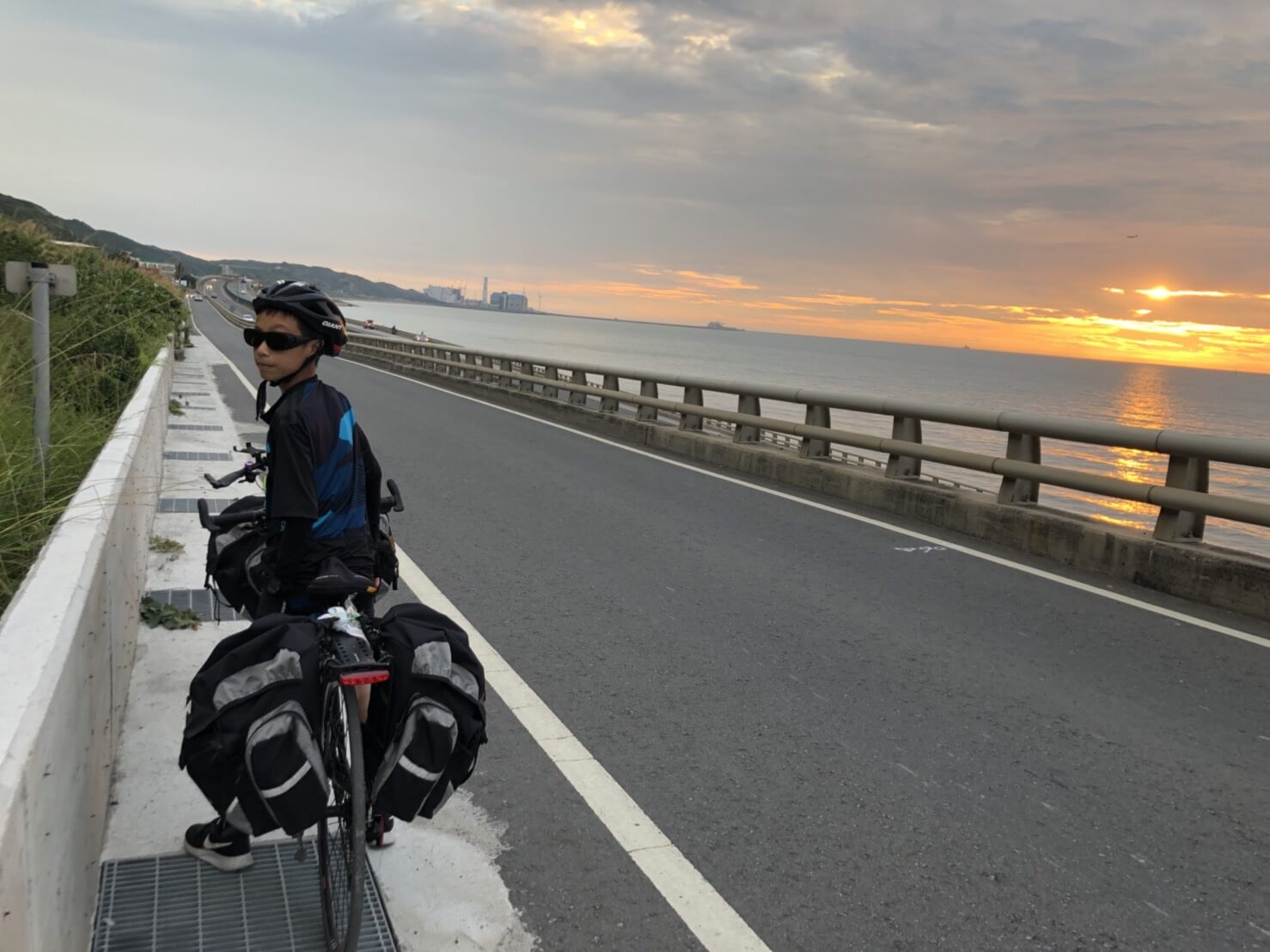
Finding the Best Bike for Your Family Ride Around Taiwan
Bikes are the most essential tool for your family cycling trip around Taiwan, so it’s important to consider the following four factors before making a choice:
- Should You Buy or Rent Bikes for Your Round-Island Ride?
- How to Choose the Right Bike Model?
When selecting a bike, it’s important to consider details such as the rider’s age, body size, height, cycling distance, terrain, comfort, and personal preferences. - If stamina is a concern, you might want to consider an electric bike (e-bike) for extra assistance while cycling.
- If your child is still young, it’s recommended to use a child safety seat or similar equipment to ensure a safer ride around the island.
If you’d like to learn more about choosing the right bike for your round-island trip, I’ve written a few articles on the topic. Feel free to check them out!
Choosing the Right Bike for Your Round-Island Ride
How to choose a bike that suits you cycling around Taiwan? 6 bike models recommend for you!
Must-Read for First-Time Round-Island Cyclists: Top 3 Bikes for Your Cycling Adventure!
Choosing the Right Electric Bike for Your Round-Island Trip
2025 Electric Bike Guide: Top 10 Models for Effortless Cycling Around Taiwan
Essential Gear Checklist for Your Round-Island Cycling Trip
Categories | Equipment List | ||
Cycling Gears | Helmet | Bike Lock | Rack |
Waterproof pannier | Water bottle holder | Water Bottle | |
Lights | Speedometer and Odometer for Cycling | Bungee cords | |
Cellphone holder | Phone holder | Bell | |
Bar end | Small Top-tubing Bag | Ride Recorder | |
Repair tools | Multi- Tools | Pump or Co2 | Chain oil |
Inner-tubes | Tire Lever | Tire Patches | |
Chain Breaker | Quick Release Skewer | ||
Personal Clothing | Cycling Wear | Cycling gloves | Sun protection sleeve |
Cycling Headband / Cap | Sunglasses | Knee Protection / Elbow Protection | |
Windproof and Waterproof Jacket | Cycling Shoes | Raincoat | |
Cycling Shorts | Underwear, Comfortable Clothing | Sports Socks | |
Others | Cellphone | Power Bank | Charging Cable |
Wallet | Personal Identification | Hygiene Products | |
Medications | Garbage Bags | Sunblock | |
Learn More About Round-Island Cycling Gear: Unboxing the Top 3 Must-Haves and Regrets!
Pre-Trip Physical Training
To prepare for the various challenges of a round-island trip, regardless of the route length, it’s recommended to undergo some necessary physical training beforehand. So, how can you go about it?
- In the first month, focus on cardiovascular training. Start by cycling the same distance, but gradually reduce the riding time to improve your endurance and efficiency.
- In the second month, start with shorter rides and gradually increase the cycling distance each week to build up your stamina.
- In addition, incorporate core strength training to improve your stability and control while cycling.
- Practice hill climbing and descending techniques to prepare for different terrains you’ll encounter during the trip.
- Go for family weekend rides to improve coordination and get everyone used to cycling together.
- Teach your kids the basic traffic rules and cycling etiquette to ensure safety and smooth riding on the road.
Read More:Guide for Cycling Training Plans on Taiwan Bike Tours
Common Questions and Answers for Parents on Family Travel Trips
- What age is appropriate for kids to join a family cycling round-island trip?
- It’s recommended that kids be at least 6 years old and have basic cycling skills, such as being able to control the bike and maintain balance.
- What gear do you need to prepare?
- Bikes and Safety Gear:
Choose bikes suitable for family cycling or child-specific bikes, along with helmets, reflective vests, and bike lights for safety. - Repair Tools:
Spare tire, pump, and a basic repair tool kit. - Personal Gear:
Clothing, sun protection products, rain gear, personal medications, water bottles, and snacks. - Other Essentials:
Power bank, map, camera, and first aid kit.
- How to Plan a Route and Itinerary Suitable for Kids?
- Choose classic routes or flatter sections of the road, avoiding steep hills or areas with heavy traffic.
- Plan the daily riding distance and rest breaks based on your child’s age and fitness level, allowing for flexibility and adjustments along the way.
- Incorporate sightseeing stops along the way so that your child can also enjoy the journey and have fun.
- How many days does it take to cycle around the island?
- It is generally recommended to allow 9 to 12 days, but this can be adjusted based on your child’s fitness level and the specific itinerary.
- How can I ensure my child’s safety?
- Follow traffic rules and pay attention to road safety while cycling.
- Make sure to stay hydrated and refuel regularly to prevent heatstroke and dehydration.
- Be mindful of sun protection and warmth to prevent sunburn and catching a cold.
- Carry emergency contact information to ensure you can get help whenever needed.
- Keep a close eye on your child’s condition and take breaks as needed.
- What should I do if there’s a bike breakdown or an accident?
- Carry a basic repair tool kit and learn some essential repair skills.
- Seek assistance from a nearby bike shop or professional mechanic.
- In case of an accident, immediately call emergency services for help.
- How can I prevent my child from getting sick or injured during the trip?
- Make sure your child is in good health before starting the trip.
- Pay attention to food hygiene to avoid stomach discomfort.
- Take regular breaks to avoid excessive fatigue.
- Carry essential medications and a first aid kit.
- How can I keep my child in a good mood during the trip?
- Use games and stories to increase family interaction and make the trip more enjoyable for your child.
- Encourage your child to document the journey, helping them develop observation skills and expression abilities.
- Provide timely encouragement and praise to help your child feel a sense of accomplishment.
- What are some accommodation suggestions?
- Book accommodations in advance to ensure quality and safety.
- Choose accommodations that are close to the route and have convenient transportation access.
- Consider family-friendly amenities, such as children’s play areas, swimming pools, and other child-centric facilities.
- What are some important things to keep in mind for a family cycling round-island trip?
- Maintain flexibility in the itinerary, adjusting the schedule based on your child’s physical condition and mood.
- Don’t focus too much on the progress—enjoy every moment of the journey.
- Always keep an eye on your child’s safety and avoid letting them out of sight.
- Encourage your child to be involved in the planning process to foster a sense of participation and responsibility.
- Prepare small rewards or gifts to motivate your child to complete the challenges.
- Keep a record of every moment during the journey to create cherished memories.
Summary and Advice
A family travel trips around the island is not only an adventure to explore nature and culture, but also an opportunity to strengthen family bonds and foster your child’s growth. Below are the rewards of the trip along with some practical tips to help you have an even better experience on your future travels.
The Rewards of a Family Cycling Trip
Enhance Family Unity
-
Spending Quality Time Together:
During the trip, exploring new places and experiences together creates unforgettable family memories. These moments not only bring family members closer, but also provide more opportunities for communication and interaction. -
Improving Cooperation Skills:
By solving various challenges together during the trip, family members learn to collaborate and communicate more effectively. These skills will continue to be valuable in everyday life.
Child’s Growth and Learning
-
Expanding Horizons and Knowledge:
Exposure to different cultures and natural landscapes during the trip sparked your child’s curiosity and passion for learning. Visiting places like museums and national parks allowed your child to learn while having fun. -
Enhancing Adaptability:
Traveling in different environments taught your child how to cope with various changes and challenges. This experience is highly beneficial for their growth and development of independence.
Useful for Family Travel Tips
Budget-Saving Tips for Your Trip
-
Book in advance:
Booking accommodations and transportation early not only ensures better options but also helps you secure better prices. -
Be flexible with travel dates:
Avoid traveling during peak seasons to enjoy better prices, fewer tourists, and a higher quality travel experience. -
Bring your own snacks and drinks:
Preparing your own meals during the trip can save on food costs while ensuring your child enjoys healthy and familiar food.
Leverage technology tools like navigation and translation apps to save time and avoid unnecessary costs during your trip.
-
Navigation apps:
Use navigation apps, like Google Maps or other local tools, to ensure smooth travel routes and quickly adapt to changing road conditions. -
Translation apps:
In environments with different cultures and languages, translation apps like Google Translate can help overcome language barriers, allowing you to communicate more effectively with locals. -
Travel planning apps:
Use travel planning tools (I personally prefer pen and notebook) to organize and track all the details of your trip, ensuring a smooth itinerary.
MathewBike Customizes the Perfect Family Cycling Route for You!
If you feel overwhelmed by planning the route, preparing the bikes, and bringing the kids along, don’t worry—MatthewBike can take care of everything for you!
The services we offer include:
- Customized Family Cycling Trip Planning
- Bike & Equipment Rental
- Van Support
- Bike Repair
Contact us now to schedule a consultation and let MathewBike plan a safe, comfortable, and unforgettable cycling trip around the island for you and your family!
